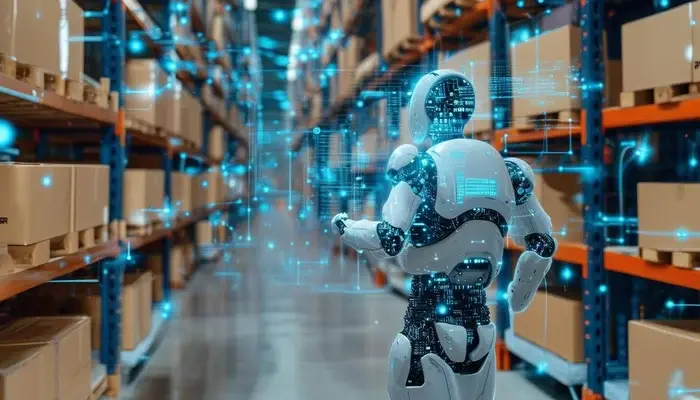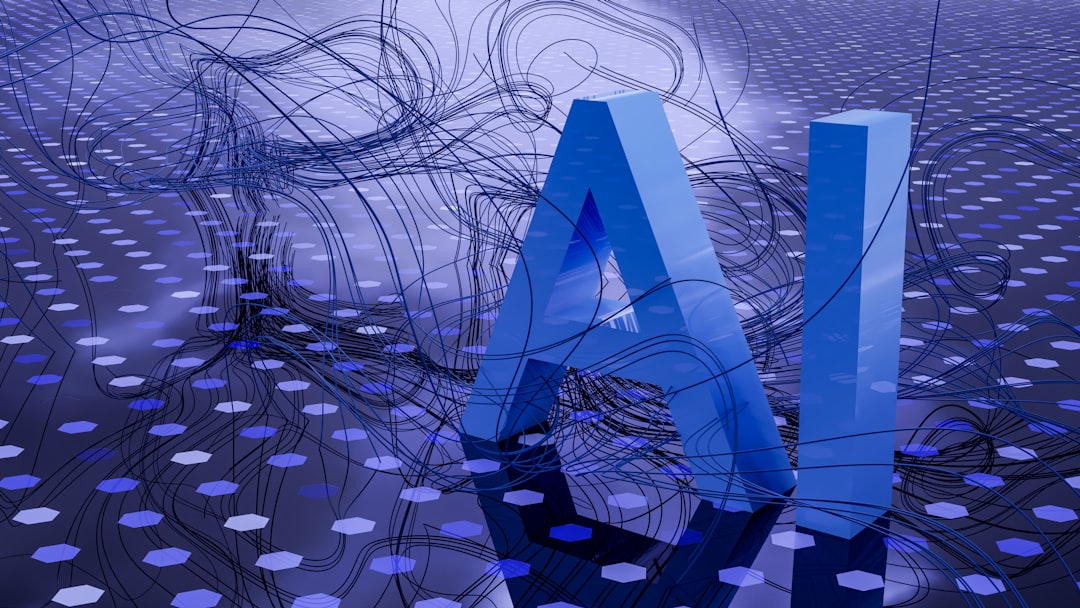The Dawn of the Operational AI: Beyond Consumer Gadgets to Core Business Strategy
For years, the term “AI assistant” conjured images of consumer-facing voice assistants on our phones or smart speakers—novel tools for setting timers, playing music, or answering trivia. While the latest Smart Home AI News continues to highlight innovations in this space, a more profound and disruptive transformation is unfolding within the enterprise. We are witnessing the rise of the operational AI assistant, a sophisticated class of intelligent systems designed not for convenience, but for core business functions. These AI are being woven into the very fabric of corporate operations, from inventory management and supply chain logistics to employee training and customer service. This shift is more than just a technological upgrade; it represents a fundamental change in business strategy, one so significant that it is causing ripples in the highest echelons of corporate leadership, redefining roles like the Chief Technology Officer (CTO) and demanding a new, AI-first mindset.
This evolution from consumer novelty to corporate necessity is forcing companies to rethink their entire technology stack and organizational structure. As businesses integrate AI to automate complex tasks, optimize workflows, and generate predictive insights, the traditional lines between technology and business operations blur. The latest AI Assistants News is no longer just about new features for Siri or Alexa; it’s about how AI is enabling a retail giant to predict stock needs with uncanny accuracy, how a manufacturing plant is using AI-powered assistants to guide workers through complex assembly processes, and how this deep integration is fundamentally altering the skills required to lead a modern technology division.
From Chatbots to Cobots: Unpacking the Enterprise AI Assistant Ecosystem
The enterprise AI assistant is not a monolithic entity. It encompasses a diverse ecosystem of specialized tools and platforms tailored for specific business functions. Understanding this landscape is crucial for any organization looking to leverage intelligent automation effectively. These systems move far beyond simple chatbots, integrating deeply with a company’s data streams and operational hardware.
Key Categories of Operational AI Assistants
1. Supply Chain & Inventory Intelligence: This is one of the most impactful areas. AI assistants analyze vast datasets—including historical sales, weather patterns, local events, and social media trends—to forecast demand with remarkable precision. For a large retailer, this means automated inventory replenishment orders, reduced overstocking, and minimized stockouts. The system functions as a perpetual, data-driven analyst, ensuring optimal stock levels across thousands of locations. This domain is a hotbed for AI Monitoring Devices News, as smart sensors and IoT devices provide the real-time data these AI systems need to function.
2. Employee Augmentation & Training: Instead of replacing human workers, many AI assistants are designed to augment their capabilities. In a quick-service restaurant, a “barista assistant” might be an AI-powered overlay on a point-of-sale (POS) system that guides a new employee through a complex drink order, ensuring consistency and speed. In a factory setting, this could manifest through Smart Glasses News, where an engineer receives AI-driven, step-by-step repair instructions via an augmented reality display. These tools reduce cognitive load, accelerate training, and minimize errors. The latest developments in AI Phone & Mobile Devices News are critical here, as these platforms often serve as the primary interface for employee-facing assistants.
3. Customer Service & Experience Automation: Evolving far beyond first-generation chatbots, modern AI service assistants can handle complex, multi-turn conversations, access customer history, process returns, and even detect user sentiment to escalate issues to a human agent when necessary. They are integrated into a company’s CRM and ERP systems, providing a seamless experience. This is also where AI Audio / Speakers News becomes relevant in the enterprise, with voice-based AI handling service calls with increasing sophistication.
4. Data Analysis & Decision Support: At the executive level, AI assistants act as powerful data analysis tools. A CEO can ask a natural language query like, “What was our top-performing product line in the Midwest last quarter, and how did marketing spend correlate with sales?” The AI assistant can parse through terabytes of data from multiple departments and generate a concise report with visualizations in seconds. This democratizes data science, making powerful insights accessible to non-technical leaders and shaping strategic decisions.
The Technology Stack: Powering the Intelligent Enterprise

Implementing these sophisticated AI assistants requires a robust and modern technology stack that goes far beyond simply deploying a piece of software. It involves a complex interplay of hardware, software, data pipelines, and network infrastructure, often blending cloud and edge computing paradigms.
Core Components of the Enterprise AI Stack
1. Data Ingestion & Processing: At the foundation of any AI is data. For an operational assistant, this means pulling in real-time information from a multitude of sources. The latest AI Sensors & IoT News highlights the proliferation of devices—from temperature sensors in refrigerated trucks to motion detectors in a warehouse—that feed a constant stream of data. This data must be collected, cleaned, and processed in real-time, often using scalable cloud platforms like AWS, Google Cloud, or Azure.
2. The Rise of AI Edge Devices: While the cloud is essential for training large models, many real-time applications require processing to happen locally. According to AI Edge Devices News, there is a massive push to embed AI capabilities directly into hardware. For example, an AI-powered security camera (part of the broader AI-enabled Cameras & Vision News trend) can perform object detection on the device itself, only sending an alert to the cloud when it identifies a threat. This reduces latency, saves bandwidth, and enhances privacy. This is also crucial for Autonomous Vehicles News, where split-second decisions cannot wait for a round trip to a data center.
3. Machine Learning Models & APIs: The “brain” of the assistant is a set of machine learning models. These can range from predictive models for inventory forecasting to Natural Language Processing (NLP) models for understanding customer queries or computer vision models for quality control on an assembly line. Increasingly, companies are leveraging pre-trained, foundational models from providers like OpenAI, Anthropic, or Google and fine-tuning them on their proprietary data. This API-driven approach accelerates development and allows businesses to incorporate state-of-the-art capabilities without building everything from scratch.
4. Integration Layer & User Interface: The most powerful AI is useless if it doesn’t integrate with existing workflows. A crucial layer of the stack involves APIs that connect the AI’s insights to ERP systems, POS terminals, and employee-facing applications. The user interface could be a dashboard, a mobile app, an AR overlay via smart glasses, or a voice interface. The design of this interface is critical for adoption and usability, a key topic in AR/VR AI Gadgets News and discussions around human-computer interaction.
Strategic Shockwaves: The AI Mandate and the Evolving C-Suite
The deep integration of operational AI is not just a technical challenge; it’s a strategic one that is fundamentally altering corporate hierarchies and the very definition of technology leadership. The shift from IT as a support function to AI as a core business driver is forcing a re-evaluation of C-suite responsibilities.
The Changing Role of the CTO
Historically, the CTO has been the master of infrastructure, software development, and systems architecture. While these skills remain vital, the AI-first era demands more. A modern CTO must now also be a business strategist, an expert in data governance, and an orchestrator of AI-driven transformation. Their focus is shifting from managing servers and databases to managing intelligent systems that directly impact revenue and efficiency. This pressure is immense, and it helps explain why some traditional technology leaders may step aside during such a monumental transition, making way for a new breed of leadership that is fluent in both technology and AI-driven business process re-engineering.
The Rise of the Chief AI Officer (CAIO)

In response to this complexity, some organizations are creating a new role: the Chief AI Officer. The CAIO is responsible for setting the company-wide AI strategy, ensuring ethical and responsible implementation, championing data literacy across the organization, and identifying new opportunities for AI-driven growth. This role bridges the gap between the technical teams building the models and the business units using them, ensuring that AI initiatives are aligned with strategic goals. This trend is not limited to one industry; from advancements in Health & BioAI Gadgets News to innovations in Smart City / Infrastructure AI Gadgets News, specialized AI leadership is becoming paramount.
Common Pitfalls and Considerations
- Data Silos: The most common barrier to successful AI implementation is siloed data. An inventory management AI needs access to data from sales, marketing, and supply chain departments. Breaking down these internal barriers is a critical first step.
- Change Management: Employees may view AI as a threat. A successful strategy requires clear communication, robust training programs, and a focus on how AI will augment, not replace, human roles.
- Ethical & Bias Risks: AI models are trained on data, and if that data contains historical biases, the AI will perpetuate and even amplify them. Companies must invest in robust testing, transparency, and ethical oversight to mitigate these risks.
Implementation Best Practices and the Future Outlook
Successfully navigating the transition to an AI-driven enterprise requires a deliberate and strategic approach. For companies looking to deploy operational AI assistants, a set of best practices can guide the way, while a look at the horizon reveals an even more integrated and intelligent future.
Recommendations for Implementation
1. Start with a Defined Problem: Don’t implement AI for AI’s sake. Identify a specific, high-impact business problem. Is it inventory shrinkage? Is it long customer service wait times? Is it production line errors? A clear target ensures that the project has a measurable ROI.

2. Prioritize a Pilot Program: Before a company-wide rollout, test the AI assistant in a controlled environment. A pilot program with a single store, a specific department, or one production line allows you to work out the kinks, gather user feedback, and build a business case for broader investment.
3. Invest in “Clean” Data: The principle of “garbage in, garbage out” is amplified with AI. Invest heavily in data hygiene, governance, and building robust data pipelines. This is the unglamorous but essential foundation of any successful AI strategy.
4. Focus on the Human-AI Interface: The success of an employee-facing AI assistant depends entirely on its usability. The interface must be intuitive, fast, and genuinely helpful. This is where insights from AI for Accessibility Devices News can be invaluable, as they focus on creating seamless human-computer interactions.
The Future is Autonomous and Personalized
Looking ahead, the trend is toward greater autonomy and hyper-personalization. The world of Robotics News and AI Personal Robots News points to a future where physical robots in warehouses and stores work in concert with AI planning assistants. The advancements in Neural Interfaces News, while still early, hint at a future of even more seamless interaction. In the consumer space, this will manifest in everything from AI Kitchen Gadgets News, where smart appliances coordinate to cook a meal, to AI Fitness Devices News that provide truly personalized coaching based on biometric data. This pervasive intelligence, from AI Pet Tech News to AI in Gaming Gadgets News, will be powered by the same underlying principles being forged in the enterprise today.
Conclusion: The Inevitable AI-Powered Future
The integration of AI assistants into core business operations is no longer a futuristic concept; it is a present-day reality that is actively reshaping industries and the leadership required to navigate them. The shift from consumer gadgets to critical enterprise infrastructure marks a pivotal moment in the evolution of artificial intelligence. This transformation demands more than just new software; it requires a new strategic vision, a commitment to data-centric culture, and a willingness to fundamentally rethink how businesses operate. The companies that successfully manage this transition will not only achieve new levels of efficiency and innovation but will also define the competitive landscape for the decade to come. The era of the operational AI assistant has arrived, and its impact is just beginning to be felt.










